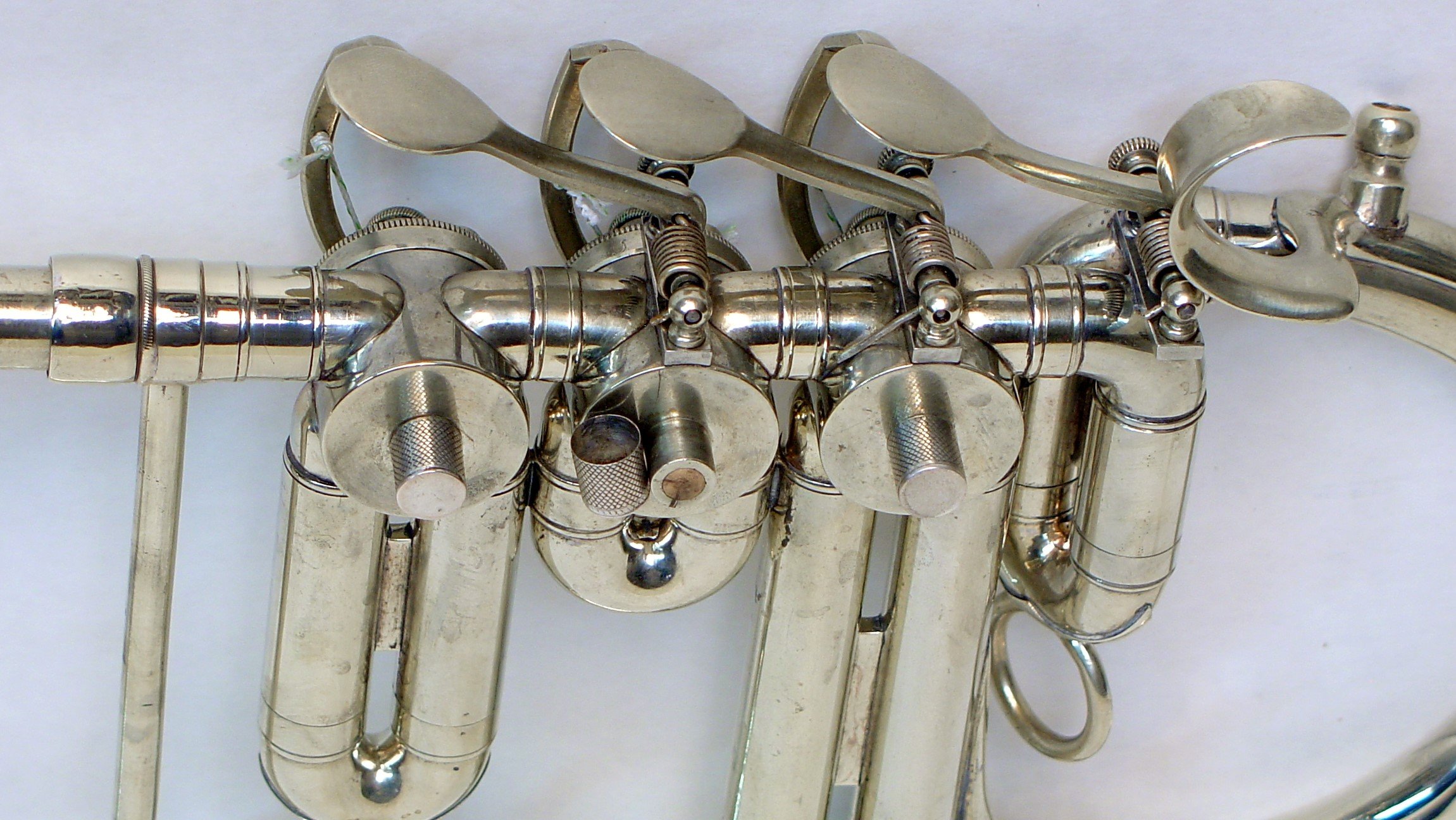Eb Cornet by Graves & Co.
This is another gem from the legendary collection of Mark Elrod. I feature a very similar instrument by Freemantle, which is the same design as several others by Graves that I have restored. The instrument here is different than any others that I have seen in several details. Confusingly, it has two main tuning slides like Mark's circular soprano by E.G. Wright. In that case it has a removable second valve crook leading me to believe that it originally was outfitted to play in lower pitches with circular crooks replacing the tuning mouthpipe shank. This instrument however has a fixed second crook, although that doesn't rule out using a crook to D or C with a bit of lip work to bring the sharp second valve notes down.
Click on image for larger views.
Another unique design feature here is the bell, which is different than any Graves or other Boston made Eb soprano from that era. Its taper and flare is smaller than the other American style Saxhorn inspired sopranos (a number of these are featured elsewhere on this site) that were almost universal in US bands at the time and it is larger than the Eb cornets that became popular later. My guess is that this bell was designed specifically for this design where the bell has to be shorter than those without the tuning slide between the valves and bell. Using the more common Graves soprano bell would require that about 4" of the taper be cut off.
Because we have no catalogs or other literature showing Graves instruments, almost all that we know about them is from examining those that have survived. Additional data in the form of a set of music books were also preserved in the case. An Eb soprano part book has the name "L.W. Peters, Mohawk, New York" written in it along with the date "Jan. 1, 1857". This instrument could very well have been new at that date.
One last unique feature is a set of covers for the back bearings that are normally open in Graves rotary valves. These covers are made of Sterling silver and were most likely made by a jeweler or silversmith for the original owner. These covers would keep the bearings clean and contain the oil while they are still accessible for oiling and alignment. Beyond these details, it is typical of those made in the US, made of nickel silver with top action, string linked rotary valves. The overall length is 20 1/2", the bell rim diameter is 4 1/4" and the valve bore is .426".
It is always a great pleasure when I come across instruments of this rarity that are so well preserved. This instrument did need some restoration, but it has never been badly damaged or repaired before and represents its original condition very well. It survived with its original case, which kept the removable parts together. The tuning shank and two mouthpieces are almost certainly original, and although the shorter shank with keyed bugle style wing knobs on it is of different quality construction, I'm quite sure that it was used with it by the original owner. This shank or bit lowers the pitch so that it could be played with lower tuning of pianos and string instruments.
The last photo on the left shows this instrument next to a Graves Bb cornet made about the same time.







